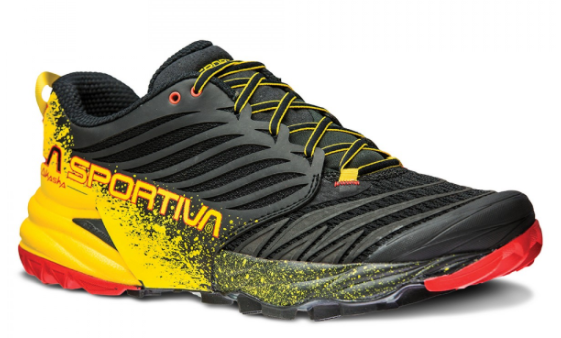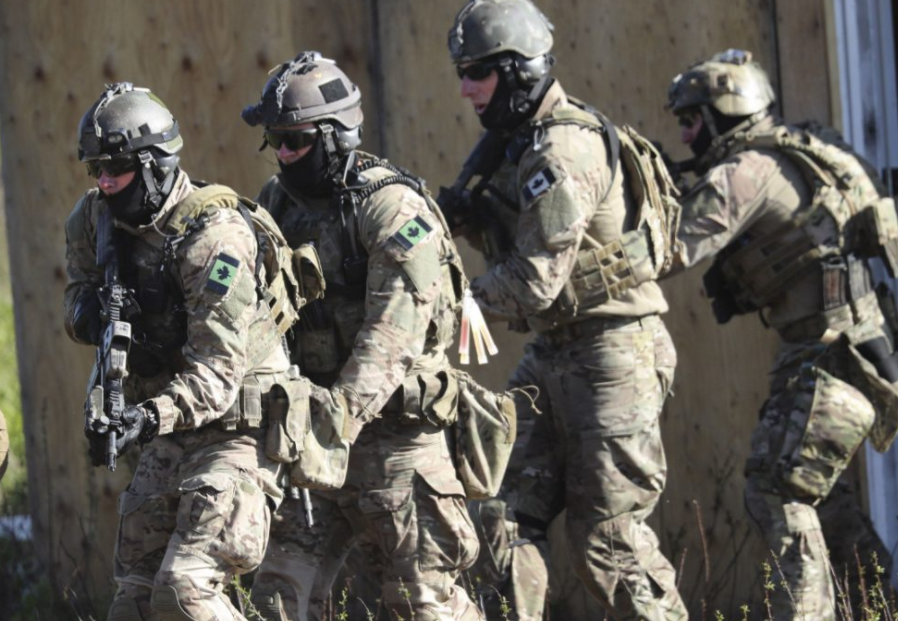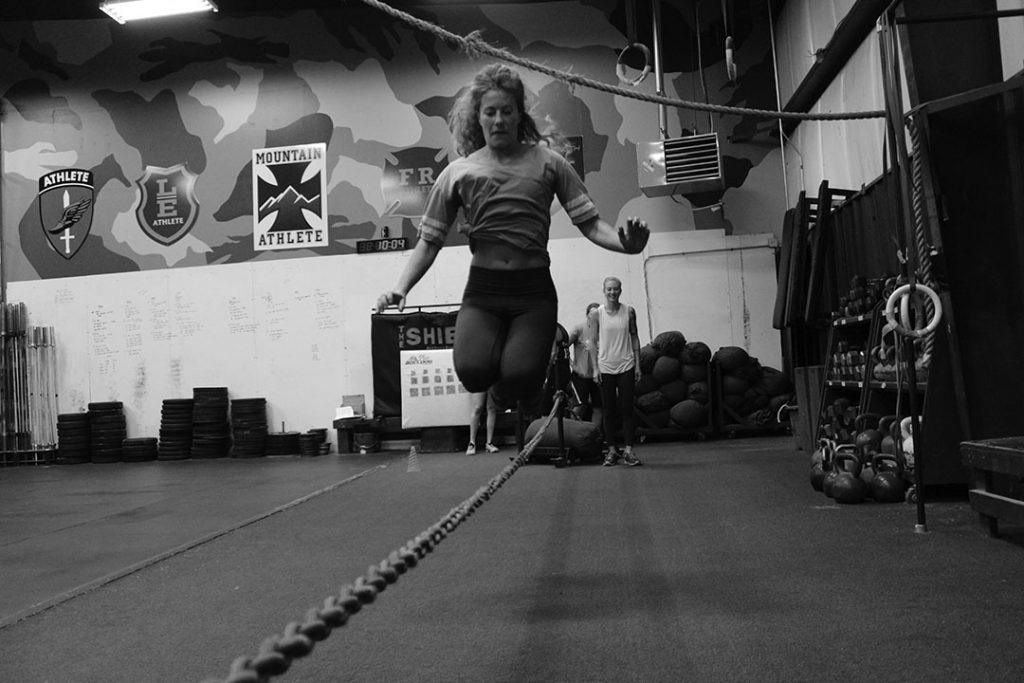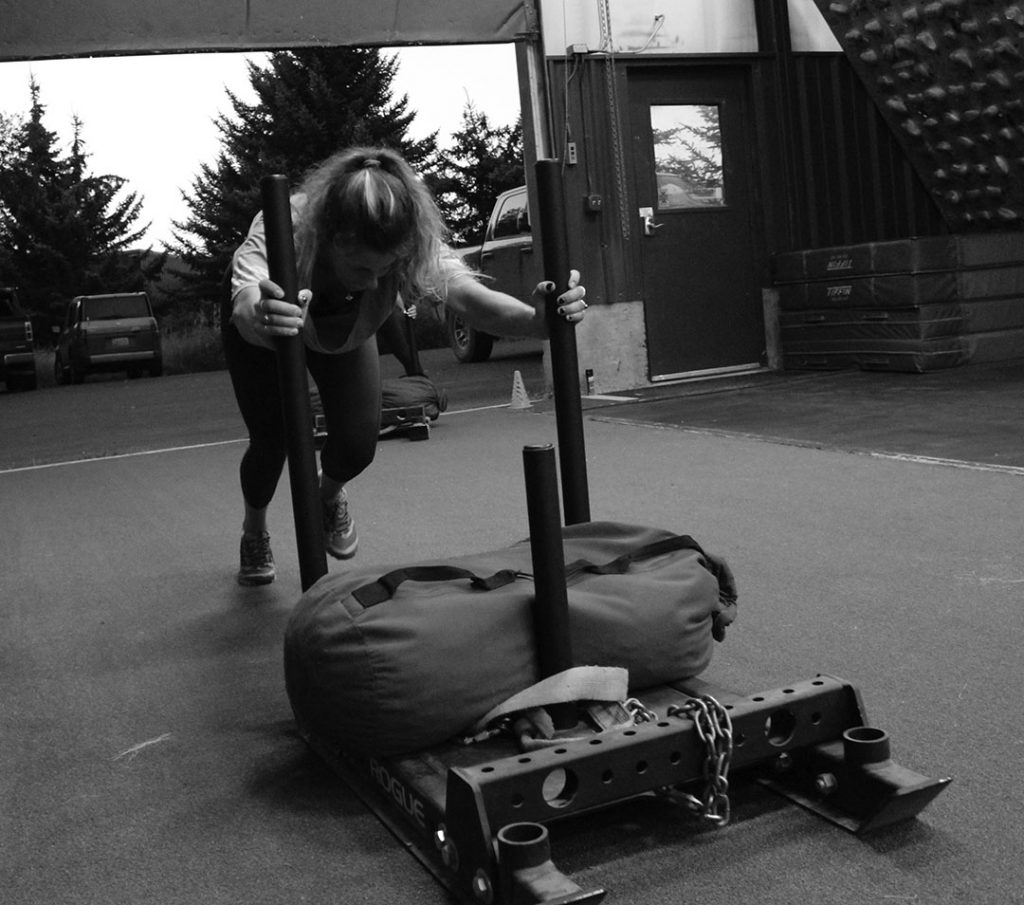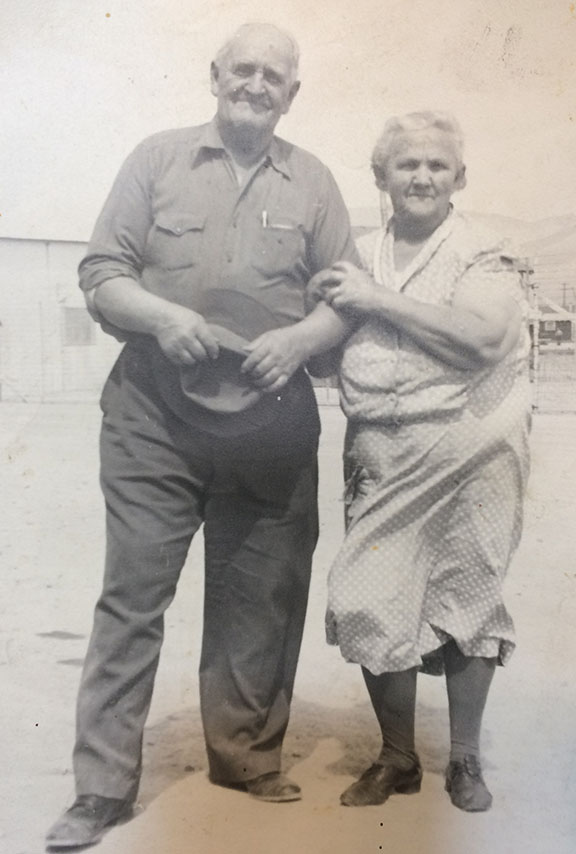KUDOS ON HUMILITY
“Just wanted to give you and your team kudos on Humility. After completing it the first time last summer, it sucked so bad I swore I would never do it again. Well after being at NTC for a month not doing any PT I decided I needed to get back in shape once I got back. After completing it a second time I can still say it really sucks. Yea it did bring my 2 mile time down to a 13:15 from a 14:17 in 4 weeks, but the real magic was how much my endurance improved. I can now keep a 7:00 to 7:30/min pace for 4+ miles with ease. My Commander even noticed how much I improved on our weekly Monday 5 mi runs. I won’t say I enjoyed it, but damn did it work wonders. Just completed week 2 of Big 24 and can’t wait to see where that takes me. Thanks again.”
QUESTION
First off, I want to thank you for putting all of the great workouts together. I signed up for the monthly subscription and my only complaint is that there’s so many to choose from! That’s a good bitch. Lol
I tried searching the site but couldn’t find a recommended protein powder. After I finish Vodka, I’m going to try the Hypertrophy program. So I was looking for a protein powder/ shake for the pre and post workout.
ANSWER
In general, we don’t recommend supplements. Real food is better.
But if you insist, I’d recommend simple EAS whey protein powder you can get from amazon.
– Rob
QUESTION
Just signed up for the athletes subscription and needed some help identifying what plan plan of attack should be.
I go to Air Assault school in January, and then home for two weeks and then right to mountain warfare school. I want to get started getting in shape next week. I have already completed your on ramp program ( older version) two months ago.
Any advice!
ANSWER
Roll into the plans in the Greek Hero Series, beginning with Hector.
– Rob
QUESTION
Active duty Infantrymen. I’ve been a subscriber for over a year and been working through plans here and there as the training schedule permits. I’m about to finish Humility next week and feeling real good about the results. My goal is to hit the entire virtue packet in order by March or so.
My question is for my father. He’s 59 years old, 5’10”, about 245lbs, and generally unfit. He’s a high school teacher so he spends plenty of time on his feet, but it’s mostly stationary. His main physical limitations is a lower tib/fib fracture he suffered almost 30 years ago that prevents him from running, jumping, and generally anything high impact. Walking under load should be okay once he’s conditioned.
He’s interested in fitness, losing weight, and getting into shape, but isn’t quite sure where to begin. I haven’t been much help because most of my PT experience has running as a central piece. Looking through several of your plans, most of the entry level plans use running as the primary cardio/work cap piece.
Given his age and physical limitation, do you have any plans appropriate for him? How would he best progress from entry level to a solid fitness base? Within those plans, how do you recommend getting around the running/jumping element? And generally, if he were to continue and work into your SF45 series or other regular fitness habit, what exercises would you recommend as main workarounds for running?
Thanks for your time. I’m looking forward to kicking off Fortitude in a couple weeks.
ANSWER
I really don’t currently have a program for de-conditioned athletes, or for someone in the age range much beyond 55. I receive quite a few notes like yours for older athletes and/or overweight athletes, etc.
What I’d suggest to start is the
Bodyweight Foundation Training Plan. A good thing about this plan is it deploys an initial assessment, and then progressions based on the assessment results. In this way the plan automatically “scales” to his incoming fitness.
For the running in the plan, have him fast walk with a 25# pack. I would say his running limitation based on a 30 year injury seems suspect. 55 is too young for this type of limitation. (I’m 49 … )
– Rob
QUESTION
A friend put me onto your website and I’m intrigued by your training plans. I’m not an “ultra” athlete but I do prefer to run longer trail runs and compete in a few shorter trail events every year (25ks or similar distance). I’ve been doing CF for the past 1.5 years and tried to run my last 25k with little or no running training (just CF) and it didn’t work out that great. I finished but I wasn’t prepared as I had been when I did only running training. I’ve since looked for CFE programs and have found one, but I don’t find that the CF programming is really in line with the running. My box mostly follows CF.com for its workouts, so it is “constantly varied” and I’m finding that difficult to fit into a running schedule.
My box has open gym periods, so I was hoping to fit in your strength workouts during that time.
My primary question for you is: will this program be the right amount of training for a 25k trail race?
ANSWER
On it’s own, the Running Improvement Training Plan won’t prepare you well for a 25K race. The Pre-Season Ultra Plan will – but take a look at the plan and the initial weekly mileage and decide whether you can do this or are willing to suffer the soreness to do it ….
– Rob
QUESTION
I had a questions regarding an eye opening workout I participated in last week, and adjusting my priorities as a result. I’ve been seeing decent gains in my strength over the last few months, training for strength 3x weekly (closing in on double bodyweight deadlift and 1.5x front squat, numbers I’ve never been remotely close to). I’ve been coupling this with moderate pace running and swimming on the other days during this time, really just for maintenance. I’ve gained some weight, which is undesired and admittedly due to crappy diet during this time. But last week I did a workout at work that consisted of multiple sets of burpees and lunges, and was crushed by it. I was surprised and disappointed a bit. I feel this is an indicator that I need to focus more on work capacity. However I am enjoying the strength gains and would like to see those continue, albeit at potentially a slower rate. With that said, what plan might you recommend? After looking around the site, I thought Valor may be a good option, but obviously your advise is most welcome.
ANSWER
– Rob
QUESTION
I did Military On Ramp and I’ve got two weeks left in Humility. Love the stuff you guys put out, way better than what I’ve done in the past / trying to develop my own programs. Also, 7 weeks is about the right length of time before a certain pattern starts to get boring.
I’m planning on starting Fortitude next – should I drop the long run from the 10 miles in Humility to the 6 miles Fortitude starts with, or just keep progressing? I can see how it would make sense to cut down to six miles and build distance back up at an increased pace, but you’re the pro. If it is relevant, I ran Humility #25 at 10:53/mile.
Again, love your products and looking forward to continuing them. Thanks in advance for your guidance.
ANSWER
Do Fortitude as prescribed. Drop down the run.
– Rob
QUESTION
I have been doing military athlete off and on when I could as a TACP for the last five years. Recently i was told i have a torn labrum. Since then i have been trying to maintain a strength workout program and strong cardio as that is really the only time i don’t have pain in my right shoulder. I have since cross trained but have let my physical training slip off the deep end. I am awaiting surgery for my shoulder until the end of my training in a year or two. Sadly i can’t fall behind. I really want to be able to stay physically fit as best as possible. What are your recommendations for programs to use in the mean time. I know i am not 100% but i have been able to work through the pain but it has slowly creeped up on me. My running has slowed and my strength has dropped significantly. Coming from TACP i refuse to give up my physical work. Any help is appreciated.
ANSWER
Do the best you can with your shoulder.
– Rob
QUESTION
For a bit of some background:
I would consider myself in reasonable shape. I’ve been a reasonable athlete (cyclist, boxing, weight lifting) my entire life, but now heading towards 44 years old, I am slowing down. I would say I am more of a power athlete and less of an endurance athlete but my sports require endurance. I am 5’ 11” and 188 lbs. At 170 lbs, I would be serious fit as I carry a fair amount of muscle in the legs, chest and back. For exercise, I rock climb a few times a week in the gym (usually around 10 long routes, top rope or lead) and do 2 1 hour long HIIT works on Tuesday / Thursdays. I did Rainier last week but did a day rest rest between Muir and the summit (felt strong the entire climb), however I am not much of a runner. I also have 5 day climbing / hiking trip planned on September 13th in the Enchantments that will interrupt my training a bit.
I am looking at the MOUNTAIN BASE HELEN workout program as a good place to start, but I had some questions. Should I get to the point where I can run 6 miles reasonable well before engaging in this program or should I just run what I can? I think I can handle everything but the running at this stage of the game. Although my recovery might be tough on the 6 days / week over the 6 weeks. I this a good place to start?
My goal is continue to develop my fitness as I enter fall rock climbing and head into next year’s alpine season. I am certain I the works outs will slow as I enter December / January timeframe due to schedule, so I figure continue fitness well into the fall, maintain what I can during the winter with some periodization and then kick it back up heading into the spring.
ANSWER
I’d recommend you roll into
Helen. Don’t cut down the run distance – run/walk if necessary. As you know, most mountain sports have a significant endurance component. Might as well get on it.
– Rob
QUESTION
Just finished day 1 of back country big game program and wanted to proactively check in on some knee discomfort. 3/10 located outside lower edge of knee cap area (see photo) which started in around 15min of the step ups.
This same area does hurt me after hauling heavy loads in the mountains so its obviously touching on the same area of issue (it bothered me for a couple weeks last fall after hard hauling for 3days). My intention is to work through it unless it gets progressively worse but I wanted to check in if there are any suggestions or warnings I should be aware of. I don’t want to make things worse if I need to instead back off and do something else to work on my knee. I am sure this isn’t an uncommon issue you come across so I’m asking early.
ANSWER
I’m not a doctor or a physical therapist can’t offer remote medical diagnosis or advice.
One thing to consider is the upcoming hunting season …. which won’t wait for your knee to feel better. The mountains don’t care.
Also, my guess is the first thing a doctor or PT will ask is “what made you’re knee hurt?” and after you answer they’ll say, “stop doing that.”
I’d recommend doing your best to manage the pain – ibuprofen, brace – through the training/season and then get it looked at after the season.
– Rob
QUESTION
Reaching out for assistance in a training plan. I’m a Marine stuck behind a desk 8-10hrs a day in support of MARSOC Operators. I’m coming off a lower back injury and a number of months with little PT due to the injury. I have a disk that is somewhere around 25% out of place, but all the Physical Therapist have said all we can do is mitigate it and not fix it.
Trying to keep my career on track I have a number of goals I need to train for and finish out my 20yrs. I have 6 yrs left.
1: I need to prepare for the Combat Fitness Test in November. 800M run, Overhead Ammo Can Lifts, and a Short speed/endurance course.
2: 21 October 1 day Hike and shoot in the hills of Gretna, VA
3: January 2018, Mammoth Sniper Challenger, 3 days near 40miles of Hiking and shooting, in Blakely, GA
4: February 2018, 2 day Hike and shoot in Clinton, SC.
I will be continuing to shoot matches or conduct training on most weekends. During the week I need a program to fit around the hours I am in the office. We have trails on base, but it is pretty flat here. Gym is pretty nice as we’re MARSOC.
I would greatly appreciate your advice as I intend to fully improve physically this year after the beating my body took last year barely passing the PFT after only a 1-2weeks of preparation coming off the injury at the end of the PFT season.
Thank you in advance as I look forward to getting some info back from you!
ANSWER
I’d recommend you start our stuff with the
Low Back Fitness Training Plan. This plan will help you build back your low back strength/fitness and confidence in your back.
After your CFT, complete the
Military On-Ramp Training Plan, and then drop drop into the
Greek Hero Series of plans, starting with Hector. These will do good job of maintaining your military fitness and preparing you for your shooting comps. These plans concurrently train strength, work capacity, tactical speed and agility, endurance (running, rucking) and chassis integrity.
These plans can be purchased individually at the links above. As well, all come with an
Athlete’s Subscription to the website.
– Rob
QUESTION
My question is regarding the ruck-run pace for the mini-events in the SFRE training plan. I just completed week one with the 120 minute ‘mini event’.
What sort of pace am I aiming for with the ruck run? I airborne shuffled the ruck run sessions and the goal was to never walk with the ruck. However, my pace ended up being only moderately faster than my run-walk pace. My garmin said I averaged a 12:59 pace each mile.
ANSWER
Generally we recommend athletes run, not walk, and make 15 min/mile, minimum.
– Rob
QUESTION
I have some questions about SFAS packet. The training packet is designed to end just prior to starting selection , however for a 18x I have to go to basic training , infantry school and airborne prior to starting SFAS. This is a significant amount of time between the end of your training packet and the actual start of the event. I don’t think it’s feasible to do the training packet while going through basic training etc. Have you dealt with this before and if so what was the best option you found?
ANSWER
We recommend 18x Candidates complete the entire packet prior to basic. Many reasons for this – but mainly to set you up for the greatest success possible not knowing your training time/ability once basic starts.
– Rob
QUESTION
I just watched your video on your sandbags and had two quick
questions. Do you still recommend the rubber mulch? I know that it
is being removed from all the playgrounds for health reasons.
Second, have you used the Brute Force Sandbags? Was wondering your
thoughts as they are much smaller size-wise, but similar in weights.
ANSWER
Yes on rubber mulch.
No on BF … but have used Rogue sandbags. I prefer
ours because of the bulk, but it’s a personal preference and up to you.
– Rob
QUESTION
I am following your Fortitude plan for the second time. I like the strength and endurance mix. What would be a healthy body fat composition level / range to aim for ? 10%, 12 % or more ? I know your plans are geared towards functionality but would appreciate your input.
ANSWER
I don’t have a solid number for you here – but around 12% would be my best guess.
– Rob
QUESTION
Coach,
We are planning to purchase the climbing training plan, but we have some questions:-
1) We intend to use this plan to train together with small group of climbers in our small start up gym. Is there any recommended group size (nos. of people) for this program to be effective if we use it in group?
2) After we completed the 6 weeks program and wish to continue training using this plan. Do we start the cycle all over again, start from session 1?
4) Does the plan prepare us for the approach?
Beside climbing we also do a bit of surfing, do you have training plan for surfing?
ANSWER
Group size will be limited by your available training equipment and coaching expertise. For example, if a circuit involves a campus board, and you only have room for one athlete on your campus board, there is an obvious limitation.
We do have a
Surf Pre-Season Training Plan, but note this is designed for folks who don’t surf everyday and need to prepare for a surfing vacation. I don’t have an in-season surfing training plan – which may be more appropriate for folks who surf freqently.
– Rob
QUESTION
I just signed up for your training Subscription and I am excited to get started. I was introduced to you through my brother who is a Army Ranger. In fact, he loved your stuff so much he drove up to Wyoming just to meet you and see your facility.
I am Junior College football official and I am trying to make it to Division 1. Fitness is a big deal, officials have to “look the part” in order to get hired into the bigger conferences. I’ve been doing the Horseman for about 6 months (and I love it) the problem is that the program it is making me look too strong/ too buff. D1 Coordinators, don’t want their officials looking like a linebackers. I need to be fit, trimmed and athletic.
I need to switch it up but i’m not sure what would be the best program to follow. Right now, I weigh 245 lbs and I’m 5’11” – I would like to get about 210-215 lbs but keep my strength. The main goal is to look good on TV, so a strong chest, arms and back with athletic legs.
What program would you recommend I follow so I can hit my fitness goal?
I appreciate all you do and I look forward to your response.
ANSWER
Pivot to the
Greek Hero Packet of Plans, starting with
Hector. These plans should allow you to maintain your strength, but also have a strong work capacity and endurance component which will help you cut mass.
– Rob
QUESTION
I’ve just started the APFT Training Plan prepping for Army OCS. I do have one question however. I’ve been doing regular crossfit at one of my local affiliates for about a year and a half now. I also noticed that some days mainly the non-running days the workouts don’t take too long. Would adding occasional crossfit classes to the program impact me negatively, or would doing it in addition be ok?
I appreciate you taking the time to read this.
ANSWER
You can add in extra sessions as long as you’re meeting the progressions in the APFT Plan. If you’re not making the progressions, pull back.
– Rob
QUESTION
I am coming off a season of criterium bike racing (short, high intensity one hour bike races). I plan to race cycle road this year and have my a races in the first and third weeks of October . The. In early November I am going to the desert to do some long days of multiputch read rock climbing. My cycle cross training will probably be 3-4 days a week with a couple weeks of build and then some specialty work to prepare for cross. Wondering g if you have thoughts ona good climbing plan that I could currently work through as I am doing my bike training. Was looking at maybe the rock preseason. But maybe scaling it back somehow to account for the biking.
ANSWER
The bulk of the programming in this plan is climbing-specific, but it does include some general fitness work. You could cut the general fitness work on account of your biking.
The climbing-specific work should not interfere with your cycling and vice versa. The only issue will by your time to train. The training sessions in this plan are designed to last 60 minutes.
– Rob
QUESTION
I am a 2LT. in the 82nd ABN training up for Ranger school. Unfortunately, I injured my lower back the first time I attended. I was hoping you could provide a recommendation for a program outside of the strict Ranger School prep on your website. During my recovery from the injury, I was essentially on bed rest for around 3 months. My endurance is still solid with a 36:00 minute five mile. However, I feel as if my body composition and strength effectively diminished to zero during my recovery. I was a collegiate swimmer, as well as, I attended and graduated the Combat Diver Qualification Course in 2014. I include that as I know some of your programs include water based PT. I would like to focus on gaining my overall strength back in order to sustain rucking heavy weight. In addition to, I want to improve my cardiovascular endurance for running and rucking. Thank you in advance for your recommendation and help.
ANSWER
It’s unclear from your note where you are in your recovery.
If your back is fit and you’re good to go, I’d recommend you start with the
Military On-Ramp Training Plan, followed by
Fortitude, which combines heavy gym-based training and military endurance (running, ruck running).
If you’ve been cleared to train, but your back is still suspect, start with our
Low Back Fitness Training Plan, then move to the Military On-Ramp then Fortitude.
Email back on the other side of Fortitude.
– Rob
QUESTION
I have been really interested in your company and programs for quite some time and am ready to start incorporating them into my training plan. I am currently a wild land fire fighter with the goal of moving on to a hot shot crew next season. I can run and hike well and have above average PFT scores. By next season I would like to improve my PFT scores, get stronger, gain a practical amount of muscle mass and be able to hike well with 85-100 pounds, while still being able to run well come next fire season. Which programs and in what order would you recommend from October – May. Id like to start the in season strength training plan for endurance athletes now and continue that until the end of this current fire season and then probably use the smoke jumper/ hotshot pre-season plan right before the season. Any help help would be greatly appreciated.
ANSWER
These plans concurrently train strength, work capacity with a sprinting emphasis, chassis integrity and endurance (running, rucking).
– Rob
Subscribe to MTI's Newsletter - BETA
